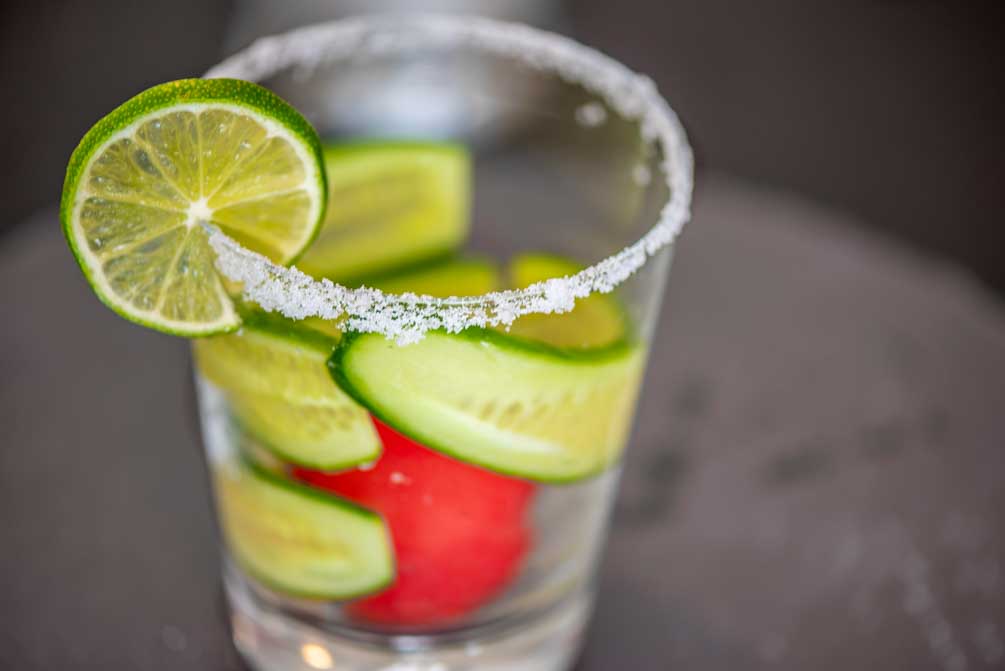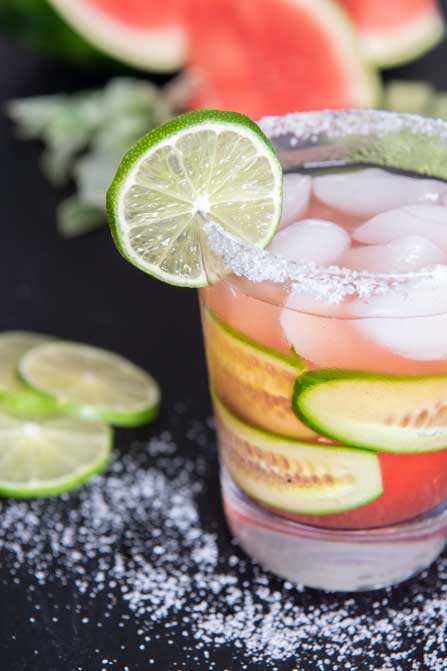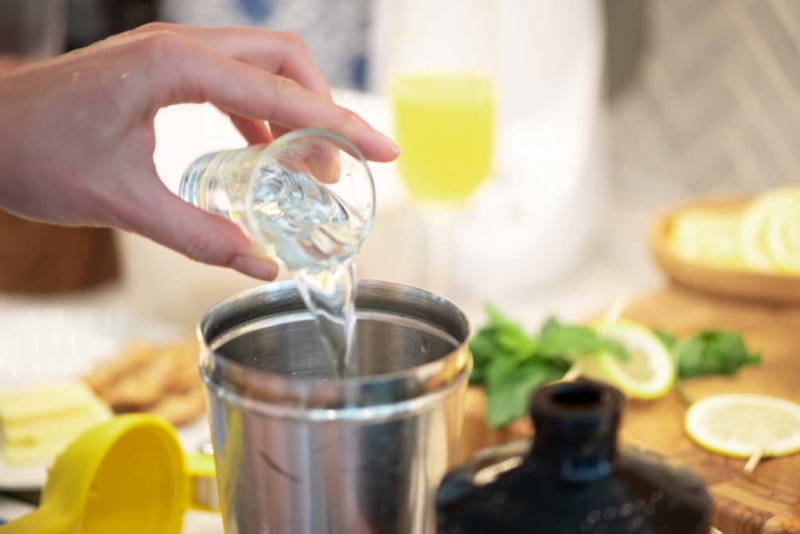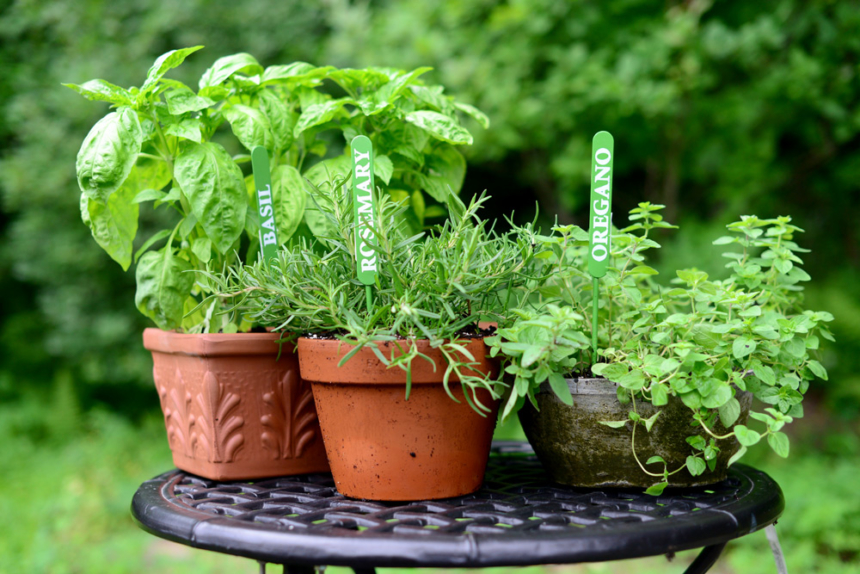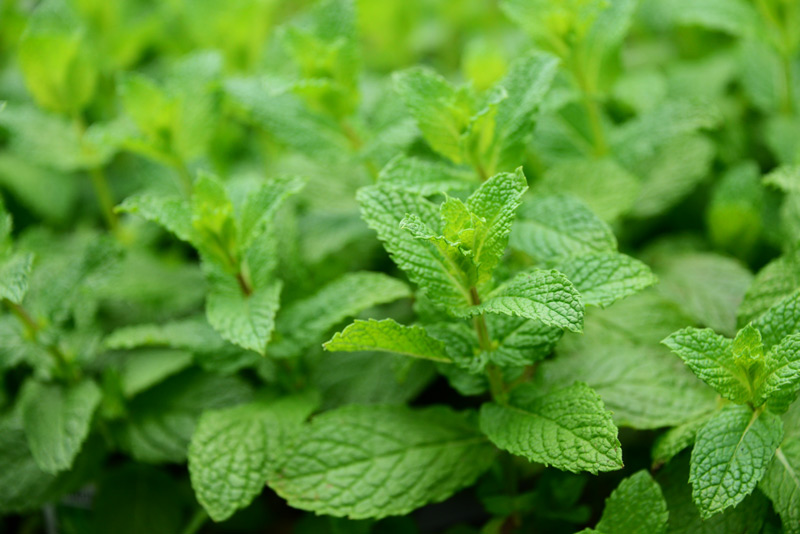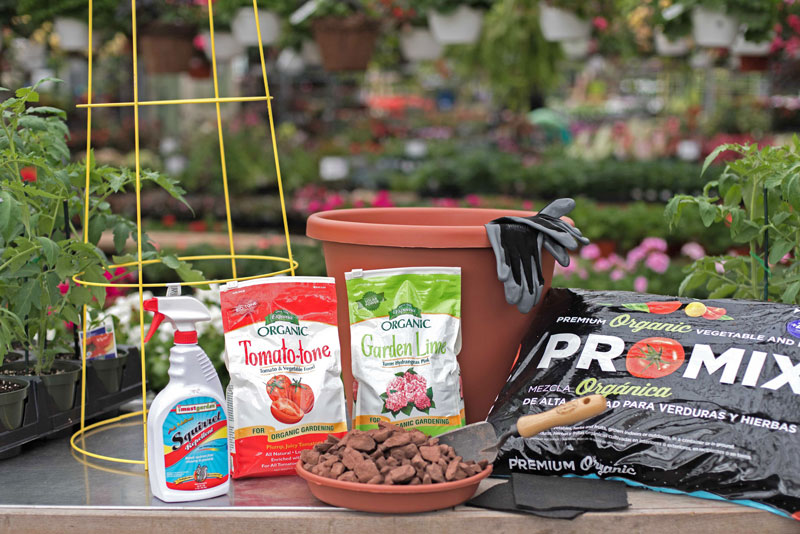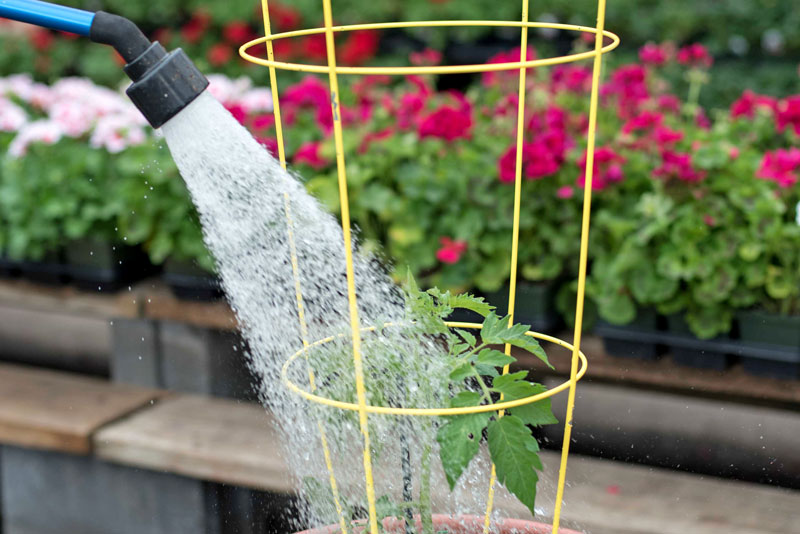Watermelon Cucumber Gin Cocktail
By Lyndsey Bridgers, Marketing Director
There is nothing as delicious as perfectly sweet, chilled watermelon on a hot summer day. This thirst-quenching fruit always accompanies a delicious spread of grilled hot dogs, hamburgers and casseroles at my family’s Fourth of July cookout. To celebrate the Fourth of July this year, we’re whipping up one of our favorite cocktails using sweet watermelon and garden-grown cucumbers and basil.
I started by juicing my watermelon. I used a citrus press (mostly because I already had it out for making lemonade), but you can also use a blender and then strain it with a mesh strainer or cheesecloth into a jar. Afterwards, prepare your glass by running a lime wedge around the rim and rolling it in kosher salt. Set the glass aside.
In the bottom of a cocktail shaker, add your lime juice, elderflower liqueur, cucumber and basil and muddle using a muddler or a wooden spoon. Then, pour in your watermelon juice, gin/vodka and ice and shake vigorously.
Add ice to your glass and strain in your cocktail and top with a lime wedge, cucumbers and sprig of basil. And enjoy!
Watermelon Cucumber Gin Cocktail Recipe
Ingredients (for two cocktails)
- 1 ounce of lime juice (from two limes), with one wedge reserved
- 2 ounces of elderflower liqueur
- 2 ounces of gin (or vodka)
- 6 ounces of watermelon juice (about three cups of cubed watermelon)
- 6 slices of cucumber
- 6 basil leaves, plus two small sprigs for garnish
- Kosher salt
Run a lime wedge over the rim of the glasses, then roll the rims in the kosher salt and set aside.
Add the cubed watermelon to a blender and puree until smooth. Pour the mix through a fine strainer or cheesecloth draped over a glass to separate the juice from the fiber of the fruit
Add the basil leaves, 4 slices of cucumber, lime juice and elderflower liqueur to a cocktail shaker and muddle. Next, add your watermelon juice, gin and ice and shake until cold. Fill your cocktail glasses with ice, then strain the cocktail into the glasses. Garnish with sliced cucumbers and the basil sprigs and enjoy!
Looking for more garden fresh drinks for summer parties? Try out our herb infused lemonade!


